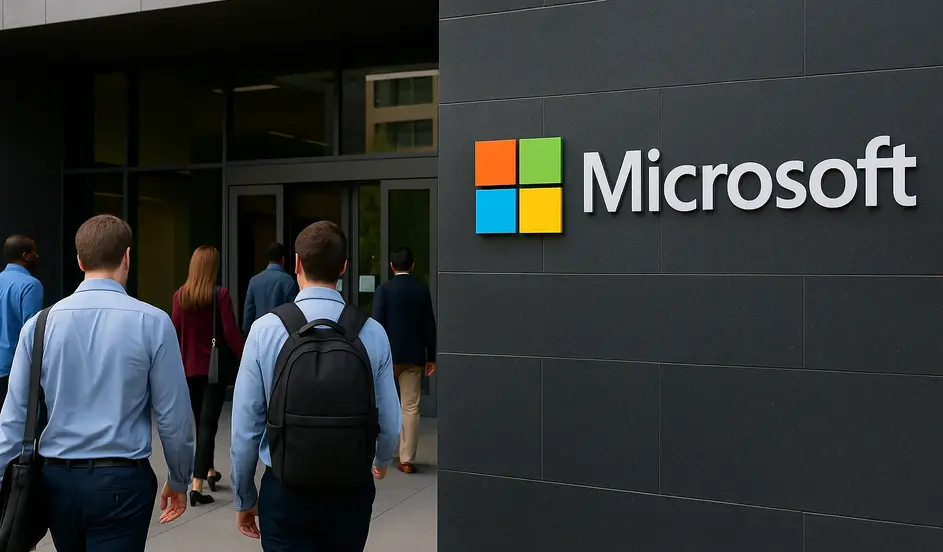The announcement of the new Microsoft Return to Office policy has reignited the debate around remote work and hybrid models. Starting in February 2026, Microsoft employees will be required to spend at least three days per week in the office.
This phased rollout will begin at the company’s Puget Sound headquarters and gradually expand to other U.S. locations and international hubs. For job seekers and current employees, the policy raises important questions: how will this reshape Microsoft’s workplace culture, employee flexibility, and broader tech industry norms?
Why Microsoft Is Making the Change
A Shift Toward Collaboration
According to Microsoft leaders, the change is not about downsizing or micromanaging. Instead, it reflects a growing belief that in-person collaboration is essential for innovation. Executives argue that spontaneous hallway conversations, team problem-solving, and mentorship thrive better when employees are physically present.
The Pandemic Legacy
The pandemic normalized remote work. For years, Microsoft promoted a flexible model, allowing many employees to work from home full-time. However, by 2025, leaders concluded that hybrid work should tilt back toward in-person routines to maintain culture and productivity.
(See coverage at The Verge and related reporting at Financial Times).
How the Policy Will Work
The Three-Day Requirement
From February 2026, all eligible Microsoft employees must attend the office at least three days per week.
Exemptions and Flexibility
Exceptions will exist for roles like field marketing, sales, and solo contributors whose work does not rely on team presence. Employees with long commutes or other hardships can apply for hybrid flexibility. Managers will retain discretion to adjust based on business needs.
Phased Rollout
- Phase 1: Puget Sound headquarters
- Phase 2: U.S. satellite offices
- Phase 3: Global offices
This staggered rollout allows the company to test logistics and refine the process.
What It Means for Job Seekers
For job seekers eyeing Microsoft roles, the Microsoft Return to Office policy carries weight:
Less Geographic Freedom
Fully remote jobs may become rare. Applicants must live near major Microsoft offices or be willing to relocate.
More In-Person Interviews
Hiring teams may prefer in-person interviews for hybrid roles, especially in leadership or technical positions.
Higher Value on Soft Skills
With more collaboration expected onsite, Microsoft will likely prioritize communication, adaptability, and team-oriented skills.
For job seekers, positioning yourself as someone who thrives in hybrid settings can give you an advantage.
(Check WhatJobs’ guide on How to Manage a Successful Team for leadership insights.)
Ready to Thrive in a Hybrid Workplace?
With Microsoft’s return-to-office shift, hybrid skills are more valuable than ever. Find the latest roles that match your strengths and career goals.
Search Jobs Now →Impact on Current Employees
The return-to-office shift may be welcomed by some but resented by others.
The Upside
- Stronger team dynamics
- Better access to mentorship
- Faster decision-making and problem-solving
The Challenges
- Reduced flexibility for parents and caregivers
- Potential burnout from commutes
- Difficulty for employees who relocated during the pandemic
For many, the policy will require restructuring personal and family routines.
Industry-Wide Ripple Effects
Microsoft is a trendsetter in tech. Its decision may influence rivals like Google, Amazon, and Meta, who also face challenges balancing hybrid work. If Microsoft successfully demonstrates productivity gains, more firms could follow.
This could mark the beginning of the post-remote work era, where hybrid becomes the dominant standard and full-time remote opportunities shrink.
(For context, see WhatJobs’ coverage on Hiring Manager Expectation 2025).
FAQs About Microsoft Return to Office
Q1: What is the Microsoft Return to Office policy?
The Microsoft Return to Office policy requires employees to work from the office at least three days a week starting February 2026.
Q2: Why is Microsoft enforcing this change?
Microsoft says the move is about boosting collaboration, culture, and innovation, not cutting staff.
Q3: Does the Microsoft Return to Office policy apply to all employees?
Most employees must comply, but exemptions exist for roles like field marketing and solo contributors.
Q4: What does this mean for job seekers?
Candidates may need to live near major Microsoft hubs, as fully remote positions will likely decline.
A Software Engineer’s Dilemma
Alex, a mid-level engineer at Microsoft’s Redmond office, moved to Spokane during the pandemic to enjoy remote work. Under the Microsoft Return to Office policy, Alex now faces a three-hour commute each way or the need to relocate.
After weighing options, Alex is considering a transfer to another office closer to Spokane or exploring Microsoft’s internal relocation program. His situation illustrates the personal challenges many employees may face as Microsoft transitions back to in-person collaboration.




